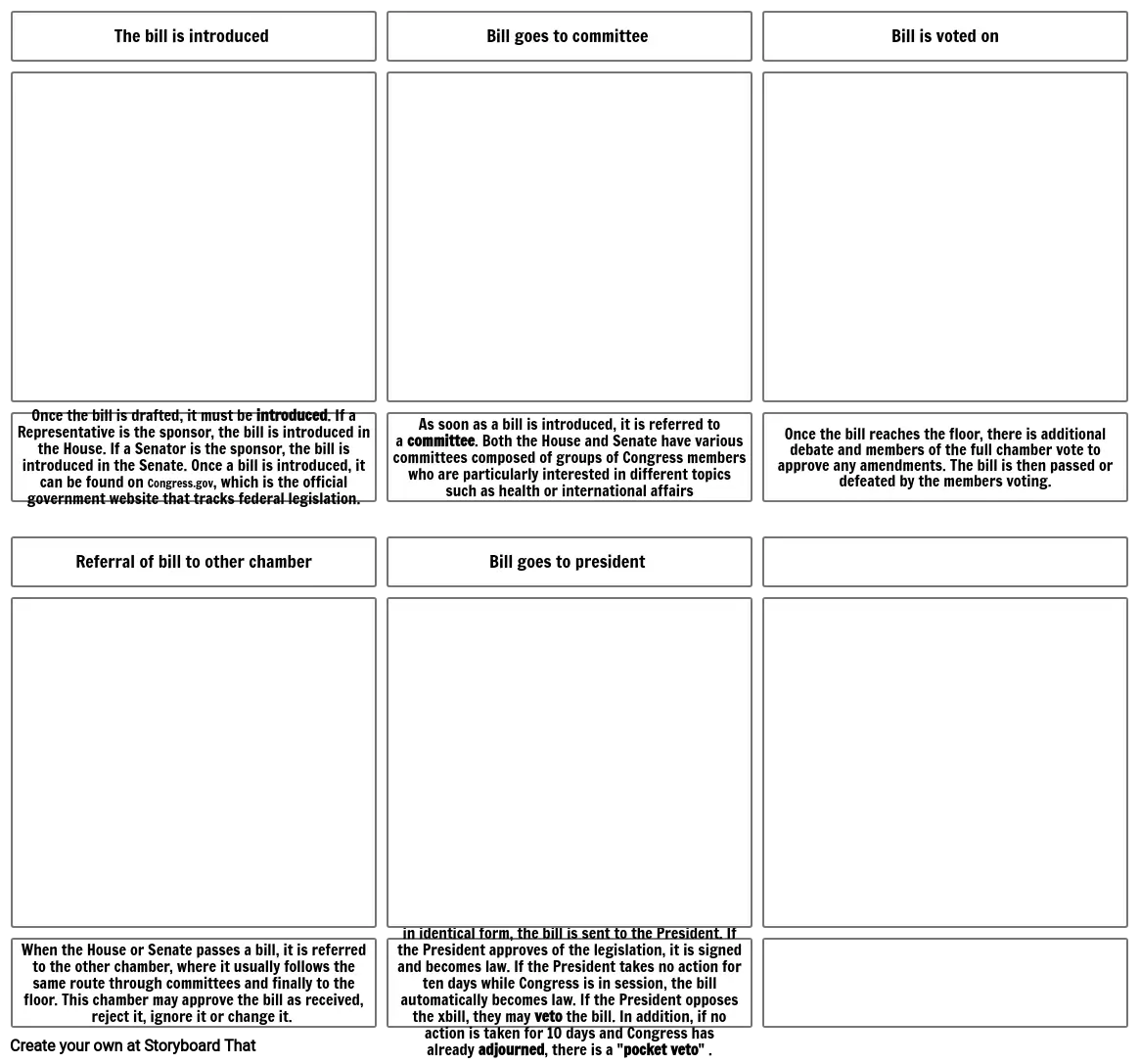Unknown Story

Storyboard Text
- The bill is introduced
- Bill goes to committee
- Bill is voted on
- Once the bill is drafted, it must be introduced. If a Representative is the sponsor, the bill is introduced in the House. If a Senator is the sponsor, the bill is introduced in the Senate. Once a bill is introduced, it can be found on Congress.gov, which is the official government website that tracks federal legislation.
- Referral of bill to other chamber
- As soon as a bill is introduced, it is referred to a committee. Both the House and Senate have various committees composed of groups of Congress members who are particularly interested in different topics such as health or international affairs
- Bill goes to president
- Once the bill reaches the floor, there is additional debate and members of the full chamber vote to approve any amendments. The bill is then passed or defeated by the members voting.
- When the House or Senate passes a bill, it is referred to the other chamber, where it usually follows the same route through committees and finally to the floor. This chamber may approve the bill as received, reject it, ignore it or change it.
- After both the House and Senate have approved a bill in identical form, the bill is sent to the President. If the President approves of the legislation, it is signed and becomes law. If the President takes no action for ten days while Congress is in session, the bill automatically becomes law. If the President opposes the xbill, they may veto the bill. In addition, if no action is taken for 10 days and Congress has already adjourned, there is a "pocket veto" .
Over 30 Million Storyboards Created

